The Emergence of China’s Nationally-Recognized MOOCs
China bolsters MOOC development through national recognition of top MOOCs in the nation
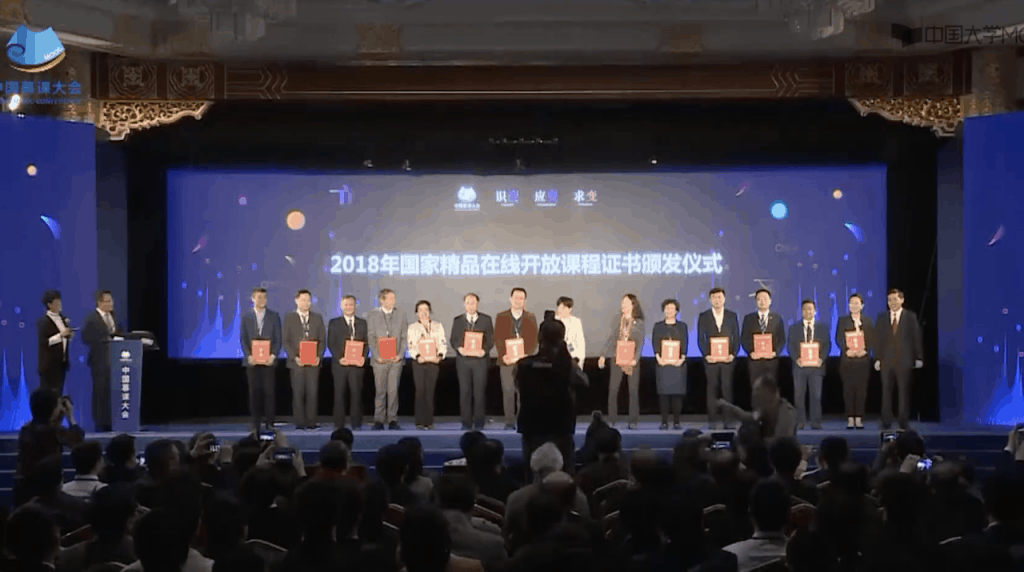 China MOOC Conference: MOOC team receiving award
China MOOC Conference: MOOC team receiving award
MOOCs took off in China in 2013 with the launch of XuetangX, China’s first MOOC platform, which was developed by Tsinghua University. Six years later, China offers over 12,500 MOOCs across more than 10 MOOC platforms.
In July 2017, China’s Ministry of Education announced an initiative to recognize the nation’s best MOOCs. Each year, the Ministry would review Chinese MOOCs against a set of quality criteria. MOOCs that pass this review would earn national recognition, the highest accolade an open online course may receive in China. The Ministry’s goal was for China to have 3,000 nationally-recognized MOOCs by the end of 2020.
In China, MOOCs are mainly geared toward university students, by contrast with the US and UK, where MOOCs also target out-of-school learners. Wu Yan, head of China’s Higher Education Department, explains the objectives behind China’s MOOC-recognition initiative:
“The main reason for developing MOOCs in China is to improve equity in higher education.” This can be achieved by “breaking time and space barriers” and by “supporting the sharing of educational resources across universities.” He added that “MOOCs are critical to reform China’s traditional, cramming teaching model.”
Recognition Process
The process for a MOOC to gain national-recognition in China involves three steps:
- Application
- Evaluation & Selection
- Recognition & Review
Let’s describe each.
Application
Every year in July, universities may submit their MOOCs to the National MOOCs Recognition Program for review. Only MOOCs developed by Chinese universities and which have been offered for at least two sessions are eligible; SPOCs (small private online courses) and other types of online courses are not.
Evaluation & Selection
To earn national recognition, MOOCs should satisfy requirements in six categories: team, design, content, teaching, impact, and support. Detailed requirements are published annually on the program’s official website.
For example, the MOOC team should consist of a lecturer, a course manager, and at least two teaching assistants. In addition, the MOOC should be designed to fit in an online or blended learning setting. It should involve thorough assessments such as quizzes and exams. And it should provide learners with support through online office hours and discussion forums.
Above all, the MOOC should have outstanding social impact, such as being widely shared by universities and receiving positive reviews from students that have taken it.
Each MOOC is evaluated by a team from China’s Education Ministry. MOOCs that satisfy this initial review are then opened to the public for one week in October and November. In light of how they are received, a final selection is made. Each year in December, China announces the new nationally-recognized MOOCs. Here are the lists for 2017 and 2018.
Recognition & Review
Nationally-recognized MOOCs will be labeled as such on their respective MOOC platforms. They should remain entirely free. And they will undergo periodic reviews for the next five years by both public and Education Ministry. So they should be properly maintained — for instance, by keeping content up to date and continuing to adequately support students.
In addition, the teaching team of each nationally-recognized MOOC will receive an award at the annual China MOOC Conference.
Stats
Number of MOOCs
The number of MOOCs that should be nationally recognized each year is set by China’s Education Ministry. Here are the targets:
- 2017 Target: 500 MOOCs
- 2018 Target: 900 MOOCs
- 2019 Target: 900 MOOCs
Since the Ministry’s goal is to reach 3,000 nationally-accredited MOOCs by the end of 2020, we can expect next year’s target to be at least 700.
In practice, numbers have fallen slightly short of their targets:
- 2017 Recognized: 490 MOOCs
- 2018 Recognized: 801 MOOCs
Note that only about one-third of the MOOCs submitted for review ended up earning national recognition. So the targets weren’t missed because of a lack of applications:
- 2017 Applied: 1,383 MOOCs
- 2018 Applied: 2,137 MOOCs
Types & Subjects
Nationally-recognized MOOCs can be distributed into three types:
- Basics courses
- Cultural courses
- Professional courses
So far, this distribution has been relatively stable each year:
| MOOC Type | 2017 | 2018 |
|---|---|---|
| Basic | 12% | 16% |
| Cultural | 28% | 23% |
| Professional | 60% | 61% |
The most common subjects among nationally-recognized courses are:
- Computer Science
- Electronics & Information
- Mathematics
- Business & Management
- Foreign Language
These five subjects account for 26% of the total number of nationally-recognized MOOCs.
Universities
Tsinghua University, the institution behind XuetangX, is the leading player in MOOC development in China and has provided the largest number of nationally-recognized MOOCs, both in 2017 and 2018.
The other top four universities are Peking University, Harbin Institute of Technology, Wuhan University and Xi’an Jiaotong University. These have contributed 20% to the total number of nationally-recognized MOOCs.
Platforms
Nationally-recognized MOOCs are offered by more than 10 MOOC platforms in China. The leading MOOC provider is Chinese University MOOC (iCourse) which offers 71% of all nationally-recognized MOOCs to date.
Future
In a couple of months, China’s third wave of nationally-recognized MOOCs should be unveiled. Assuming submissions and picks continue to grow at the same rate, China should have about 2,300 nationally-recognized MOOCs by the end of the year, keeping the nation comfortably on track toward its goal of 3,000 nationally-recognized MOOCs by the end of 2020.

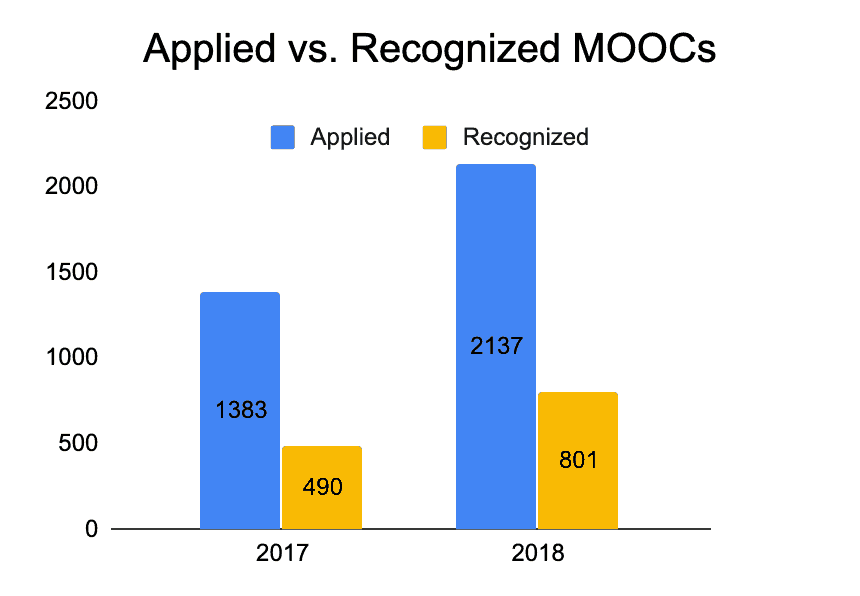
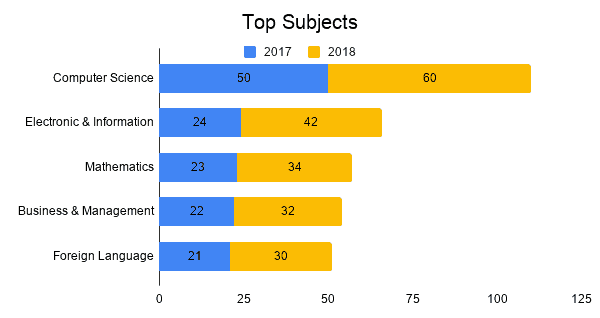
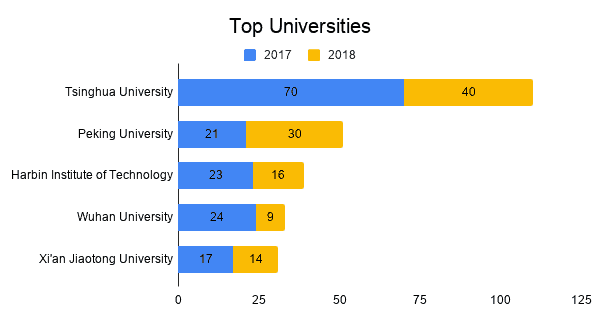
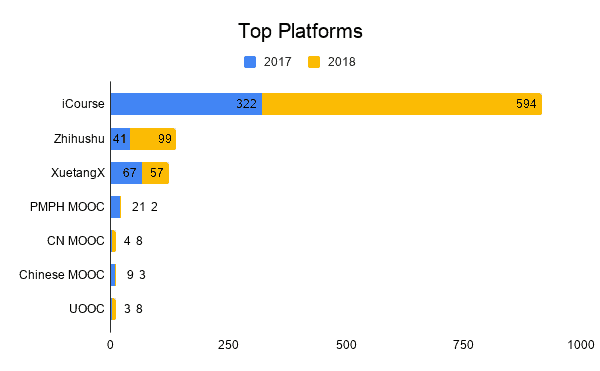






Dr. Martha Guidry Bryant
It is heart warming to hear that other countries are seeing the value of MOOCs within higher education. I received my doctorate in 2017 from the University of Louisiana at Lafayette. My dissertation topic focused on MOOCs; specifically, The Development of the Massive Open Online Course Virtual Learning Environment Scale (MVLE) and Model to Measure Satisfaction of MOOC Online Learning Courses in Higher Education: A Mixed Methods Study. My study included interviews with leaders and MOOC students within the United States and Internationally.
I would enjoy engaging discussions regarding my dissertation topic, its findings, and results with other interested individuals.
S. Kehrer
Thanks for writing this piece. Can you comment on the implications of a MOOC becoming nationally recognized? Can the completion by a student of a nationally-recognized MOOC count for credit towards a degree in an accredited Chinese university? Does a MOOC need to be nationally recognized in order to count for credit, or can a MOOC developed by Tsinghua University, for example, count for credit at THAT university regardless? (I’m trying to compare to the situation, for example, in India, where students at Indian universities can now take up to 20% of courses towards an accredited degree via courses offered on SWAYAM).
Thanks again.